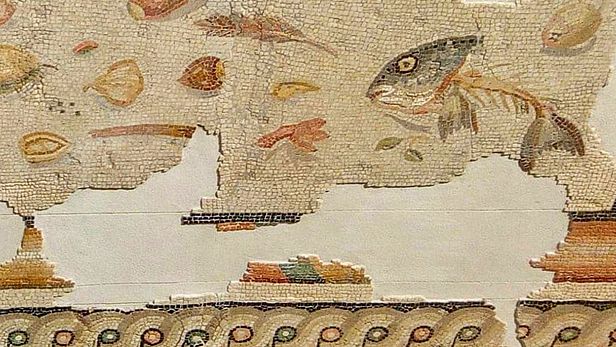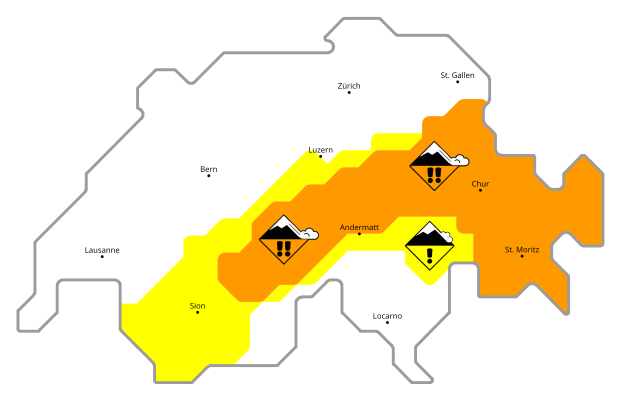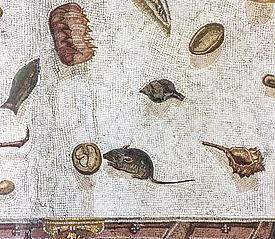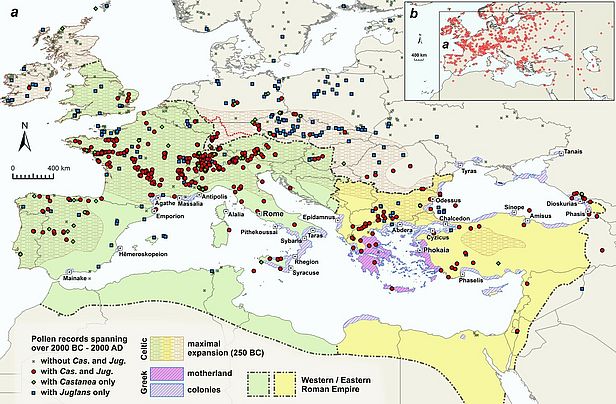16.11.2022 | Gottardo Pestalozzi | News WSL
The sweet chestnut and the walnut are an economically important tree species in Europe. It is thanks to the ancient Romans that we find their fruits and wood so widespread today. Scientists at the Swiss Federal Institute for Forest, Snow and Landscape Research WSL and the University of Bern have retraced the history of their distribution based on pollen and carpological evidence.

The Roman Empire not only unified the administration, language, religion and culture of the peoples concerned, but also influenced eating habits for many centuries. In a study published in the journal Environmental Archeology, four researchers traced the ethnobotanical history of sweet chestnut (Castanea sativa) and walnut (Juglans regia). Thus, for the first time, a comprehensive picture of the early distribution and cultivation history of these tree species in Western and Central Europe emerged.
An ethnobotanical story
The sweet chestnut and the walnut are cultivated trees. There is evidence that people were cultivating them as early as the first millennium BC. The study now shows what a decisive role the Roman Empire played in the spread of these two tree species in Central and Western Europe. This is particularly true for the chestnut, which experienced a real boom just after the Roman conquest, especially on the southern slopes of the Alps and in France. In the case of walnut instead the species was already quite widespread during the Iron Age, and the Romans consolidated a trend that was already underway.
Ancient texts testify that the Romans, like the Greeks, cultivated the chestnut primarily because of its rapid growth and its durable wood. With the walnut tree, on the other hand, wood and food production were balanced from the beginning. With the planting of chestnut trees throughout Western Europe, the Roman Empire laid the foundation for the medieval chestnut culture. The sweet chestnut was used more and more as a food source and was at times also called the "bread of the poor", especially in southern Switzerland. Today, both tree species are economically important in Europe for wood and fruit.
Pollen and fruit remains give evidence of the distribution
By studying pollen records (palynology) and plant remains recovered from archaeological sites (archaeobotany), researchers can reconstruct the past distribution of plants. For this project, the team led by Patrik Krebs, a geographer at WSL, considered all the territories corresponding to Roman Empire at its greatest extent. After a systematic analysis of pollen data extracted from the Neotoma Paleloecology Database, the researchers linked these data to historical reports and archaeological excavation finds. They compared the conclusions drawn from this with scientific publications and other sources and thus drew the most accurate map of the early developments of the sweet chestnut and the walnut arboriculture to date.
Read all the details on Environmental Ecology The Roman Legacy on European Chestnut and Walnut Arboriculture
Always up to date: Subscribe to the WSL Newsletter
Contact
Publications
Copyright
WSL and SLF provide the artwork for imaging of press articles relating to this media release for free. Transferring and saving the images in image databases and saving of images by third parties is not allowed.


